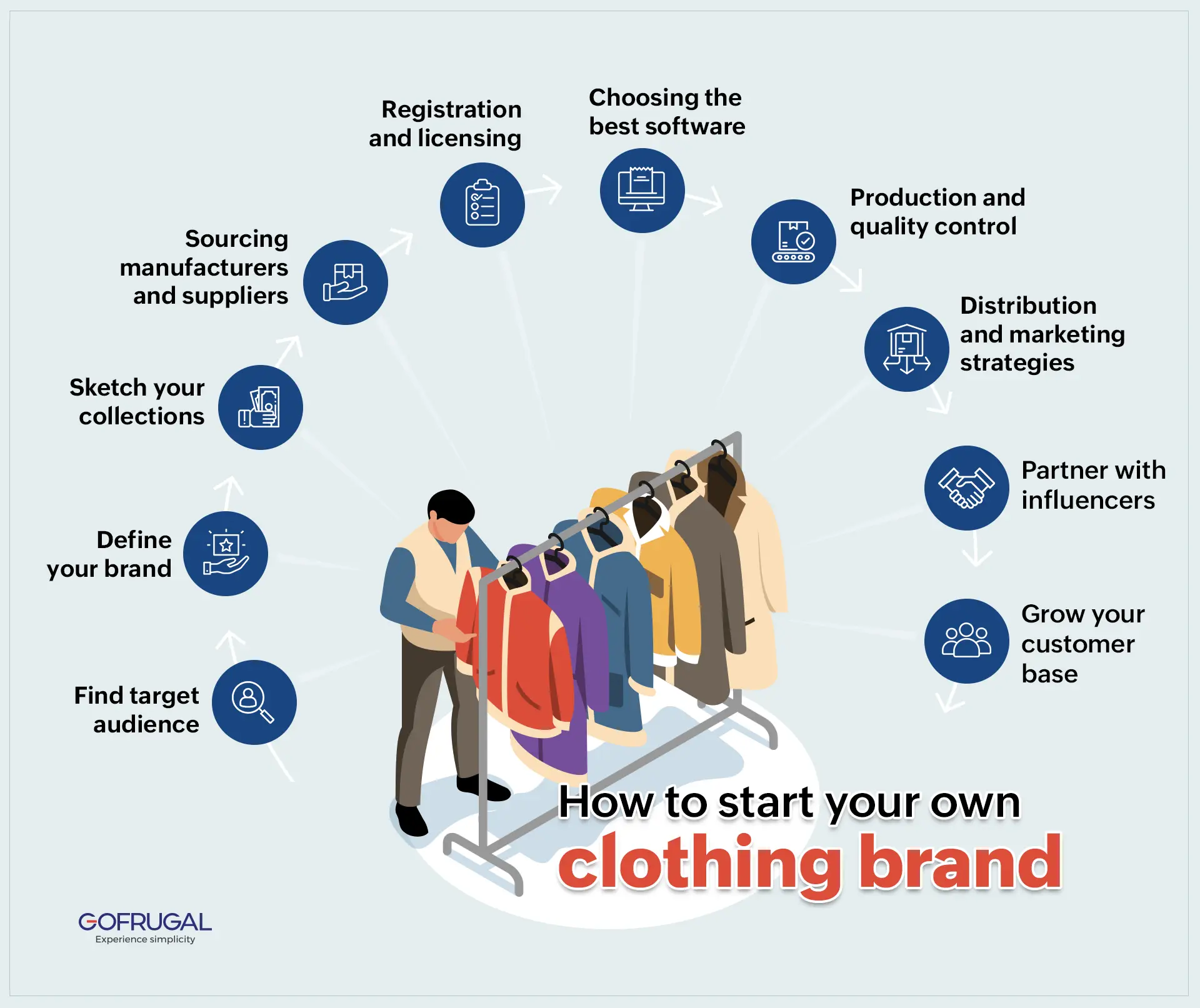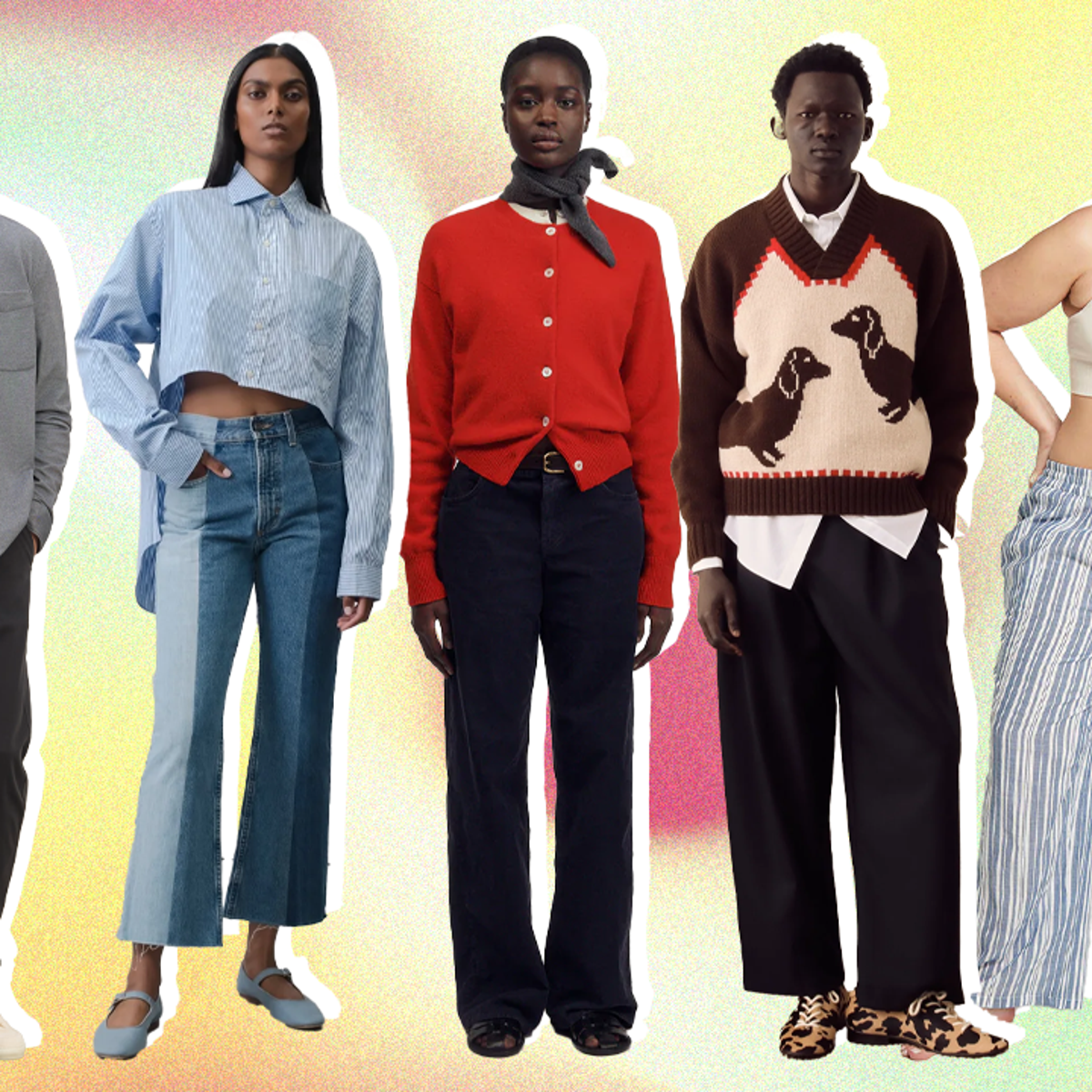How Branded Clothing Combines Fit, Function, and Fabric Innovation
How Branded Clothing Combines Fit, Function, and Fabric Innovation
Blog Article
The Value of Sustainable Clothing: Exactly How It Influences the Environment and Your Wardrobe
Lasting clothes is increasingly acknowledged for its critical function in decreasing the environmental influence of the quick fashion business. By concentrating on eco-friendly products and honest manufacturing methods, it deals with pressing eco-friendly issues. This change not just profits the earth but likewise affects customer selections, resulting in a much more thoughtful strategy to closet administration. Understanding these dynamics elevates important concerns regarding fashion's future and individual duty fit it.
The Ecological Impact of Fast Fashion

Advantages of Lasting Materials
Sustainable materials provide considerable advantages, specifically via green material options that minimize environmental harm. These materials also demonstrate durability and longevity, lowering the need for frequent replacements. As a result, they add to a more lasting fashion industry and advertise liable customer habits.
Eco-Friendly Fabric Options
While the fashion business has actually long been connected with fast fads and ecological harm, the increase of environment-friendly material selections provides a transformative opportunity. Lasting products such as organic cotton, hemp, and Tencel have obtained popularity as a result of their reduced environmental impact. These textiles are frequently generated without dangerous chemicals and call for much less water, decreasing their carbon impact - Branded Clothing. Additionally, several green textiles are biodegradable, adding to a circular economic climate by minimizing waste. Selecting lasting materials not just supports eco responsible methods yet additionally promotes healthier ecological communities. As consumers end up being extra aware of their buying power, the demand for environment-friendly textiles encourages brands to innovate and take on even more lasting production methods, eventually profiting the earth and future generations
Longevity and Longevity Benefits
Lots of customers are significantly recognizing the toughness and durability benefits of lasting materials in their clothing options. Unlike conventional textiles, lasting materials such as natural cotton, hemp, and recycled polyester are crafted to endure wear and tear, causing garments that last longer. This decreased regularity of substitute not just conserves customers money with time but also diminishes waste produced by quick fashion. In addition, sustainable garments commonly utilizes eco-friendly manufacturing approaches that improve material stamina, adding to a reduction in the overall carbon impact. By purchasing durable clothes, consumers can grow a much more sustainable wardrobe while enjoying top quality pieces that keep their aesthetic and functionality with time. Longevity and durability stand as crucial advantages of selecting sustainable products.
Minimizing Waste Through Lasting Practices
Reducing waste in the apparel industry can be attained via cutting-edge techniques such as upcycling and repurposing materials. In addition, adopting minimalist closet methods urges consumers to focus on quality over amount, eventually reducing clothing usage. Together, these approaches add substantially to an extra sustainable clothes model.
Upcycling and Repurposing Products
Upcycling and repurposing products have arised as innovative techniques in the garment industry, changing discarded textiles into beneficial new products. This approach not just minimizes waste but also motivates imagination and originality in clothes style. By taking old garments and products, developers can create distinct pieces that show personal design while lowering the need for brand-new sources. Additionally, upcycling commonly requires less energy and water compared to traditional manufacturing processes, greatly lowering the environmental footprint of fashion. As consumers come to be much more familiar with sustainability, the popularity of upcycled clothing continues to climb, advertising a circular economic situation. Inevitably, these techniques add to a more sustainable future, where fashion focuses on environmental health and wellness over quick production and intake.

Minimalist Wardrobe Techniques
As people progressively look for to minimize their ecological impact, embracing minimal wardrobe methods has actually acquired grip as an effective strategy to lasting style. These methods stress high quality over amount, encouraging customers to curate a smaller collection of versatile, durable clothes. By focusing on classic pieces that can be blended and matched, people can reduce the frequency of purchases and ultimately lower waste.Additionally, minimalism promotes conscious consumption, urging shoppers to assess the environmental and ethical ramifications of their choices. This approach not just promotes a more lasting way of living yet additionally streamlines daily decision-making pertaining to clothing. As individuals welcome minimalist concepts, they add to a fashion society that values sustainability and responsible consumerism, inevitably leading to try this web-site an extra eco-conscious society.
The Duty of Honest Labor in Lasting Style
While lots of customers are significantly knowledgeable about the ecological consequences of their garments choices, the importance of honest labor practices in lasting fashion can not be overlooked. Ethical labor includes reasonable wages, safe working conditions, and regard for workers' civil liberties, developing the foundation of liable style production. Brand names that prioritize moral labor not just boost neighborhoods however also established a criterion for liability in the industry.Moreover, the combination of honest practices promotes openness, allowing customers to make educated options about their purchases. This practice contrasts sharply with quick fashion's unscrupulous labor models, which typically focus on profit over people. By supporting business dedicated to moral labor, customers contribute to a system that values human dignity alongside environmental sustainability. Subsequently, honest labor is not just an add-on; it is important to the wider mission of sustainable fashion, making certain that the mission for eco-friendliness does not come at the expense of human civil liberties.
The Impact of Lasting Clothes on Carbon Emissions
Lasting garments has the prospective to substantially reduce carbon discharges related to the style sector. Conventional garment production adds especially to greenhouse gas emissions, primarily due to energy-intensive production processes and using non-renewable sources. On the other hand, lasting style concentrates on click to read more environment-friendly materials, such as organic cotton or recycled fibers, which frequently require less energy to produce.Moreover, lasting brand names have a tendency to adopt more reliable manufacturing practices, lessening waste and reducing overall emissions. By focusing on longevity and ageless design, lasting clothes encourages customers to get less often, further lowering the carbon footprint connected with overconsumption.Additionally, lots of sustainable brands are devoted to openness in their supply chains, enabling consumers to make educated choices that line up with their worths. Eventually, changing towards lasting clothes can bring about a significant decrease in carbon discharges, adding to a much healthier world and an extra sustainable future for the fashion sector.
Supporting Regional Economies With Sustainable Choices
The shift towards lasting clothes not just addresses ecological concerns however likewise substantially benefits regional economies. By choosing lasting fashion, consumers typically sustain local craftsmens and small companies, boosting area strength. These ventures generally operate on a smaller range, focusing on craftsmanship and moral practices over mass production.Investing in locally made lasting apparel cultivates work creation and stimulates financial growth within areas. As consumers become more familiar with the environmental effect of their purchases, they progressively seek he has a good point products that show their worths. This need motivates regional makers to embrace lasting practices, adding to a circular economy.Moreover, supporting local services minimizes transportation emissions, straightening with eco-conscious customer habits. The interconnectedness of sustainable clothes and neighborhood economies emphasizes the crucial duty that private choices play in advertising both economic and ecological health. By promoting these local links, neighborhoods can thrive while also functioning towards a more lasting future.
Transforming Your Storage Room: Tips for a Sustainable Closet
As individuals look for to decrease their ecological impact, changing a wardrobe right into a sustainable closet comes to be an important action. One effective method is to assess existing garments, keeping just items that are put on on a regular basis which line up with sustainability objectives. Prioritizing top quality over quantity is vital; buying sturdy pieces from green brand names can considerably minimize waste.Additionally, incorporating pre-owned things can rejuvenate a closet while decreasing environmental damages. Organizing clothing swaps with close friends or contributing extra products can better advertise sustainability.When shopping, individuals should look for products that are organic, recycled, or eco-friendly, and prevent fast style merchants - Branded Clothing. Finally, practicing conscious usage by attentively taking into consideration each purchase can contribute to an extra lasting lifestyle. By executing these suggestions, one can create a closet that shows personal design while supporting ecological stewardship
Often Asked Inquiries
How Can I Recognize Sustainable Clothing Brands?
To identify lasting garments brand names, one must research products utilized, check for accreditations like Fair Trade, and check out the brand name's transparency concerning their manufacturing procedures, labor methods, and environmental influence, ensuring green and ethical practices are focused on.
What Are the Expenses Related To Lasting Fashion?
The costs related to sustainable fashion can vary significantly. Higher manufacturing costs, ethical sourcing, and eco-friendly products often bring about boosted list prices, which might discourage some customers while attracting eco mindful shoppers.
Can Lasting Clothing Be Stylish and fashionable?
Sustainable apparel can certainly be stylish and stylish. Designers progressively focus on innovative products and moral production techniques, confirming that fashion and sustainability can exist together. Customers currently have varied options that blend visual appeals with environmental consciousness.
Just How Does Washing Garments Affect Their Sustainability?
Washing clothes substantially effects sustainability by consuming water and energy, adding to pollution, and triggering microplastic launch. Frequent washing can degrade textiles, shortening their life-span and raising the need for substitutes, eventually aggravating environmental worries.
What Is the Lifespan of Sustainable Garments Compared to Fast Style?
The life-span of sustainable apparel normally exceeds that of fast fashion products, commonly long-term numerous years because of high quality products and workmanship. On the other hand, fast fashion garments might degrade quickly, demanding more frequent replacements. Sustainable clothing is increasingly acknowledged for its essential duty in decreasing the environmental effect of the fast style sector. While lots of consumers are progressively conscious of the environmental effects of their garments options, the significance of moral labor methods in sustainable style can not be ignored. Branded Clothing. Sustainable apparel has the prospective to considerably lower carbon emissions linked with the style industry. In comparison, sustainable style focuses on eco-friendly products, such as natural cotton or recycled fibers, which often require less power to produce.Moreover, sustainable brand names tend to take on much more reliable production practices, minimizing waste and reducing total discharges. By focusing on sturdiness and classic design, lasting garments encourages consumers to purchase much less frequently, additional lowering the carbon footprint connected with overconsumption.Additionally, several sustainable brand names are devoted to transparency in their supply chains, allowing customers to make informed choices that line up with their worths
Report this page